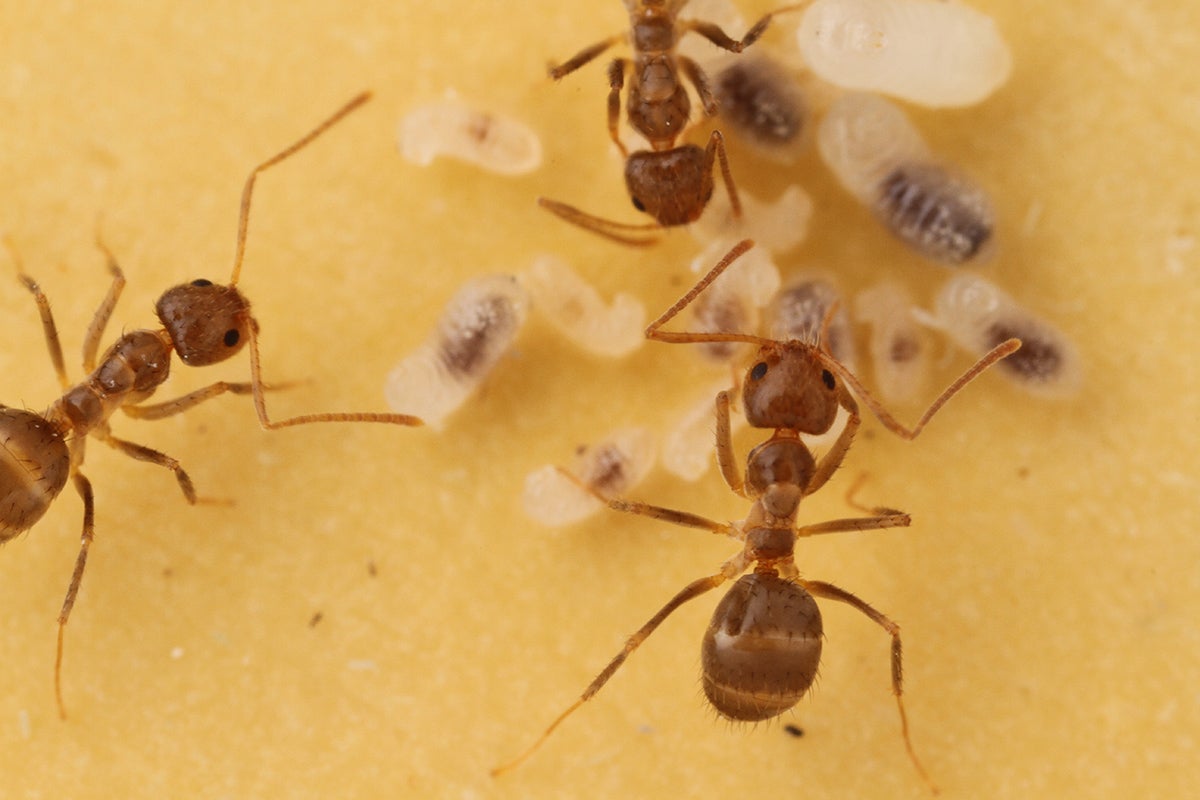Climate Change and Habitat Loss Are Big Factors in Frog Pandemic
The worldwide decline in frog populations is due to a fast-spreading infection, but people also play a role.

A foothill yellow-legged frog. Image courtesy: Brome McCreary
Up to only a few inches in length, with a lemon-hued belly, the foothill yellow-legged frog may seem unassuming. But its range once stretched from central Oregon to Baja California. In 2023, it was listed under the federal Endangered Species Act. Its rapidly decreasing range is due in part to a fungal pathogen called Batrachochytrium dendrobatidis, or Bd, that has devastated amphibians around the world.
A research team led by Anat Belasen, at The University of Texas at Austin, has conducted the most comprehensive study to date of disease dynamics in a single frog species. In a study published in Royal Society Open Science, the researchers reveal that drought, rising temperatures and the increasing conversion of land for agriculture appear to be the largest factors driving Bd infection in the species.
The foothill yellow-legged frog’s disappearance is a blow to the ecosystems in which it lives. Amphibian diversity is often low in the region, and in many places frogs occupy a distinct niche. Frogs switch from herbivores as tadpoles to carnivores as adults, which means they connect different nutrient cycles together in the food web. Their position at the center of the food chain also influences the ecosystem.
“When you remove frogs from an ecosystem, what you get is less control of insects, things that the frogs would eat,” said Belasen, a postdoctoral fellow in the lab of Kelly Zamudio at UT Austin and research affiliate with the Smithsonian Conservation Biology Institute. “There is also less food for things that eat the frogs, like snakes, birds and small mammals. It really throws things off and makes the ecosystem less stable and less functional.”
Bd is a fungus that is spread through spores in the water, but that spread may occur differently in foothill yellow-legged frogs in different regions and climates, the researchers found. In some places, drought increased infection, while in others, it did not, possibly because of the presence or absence of other species that can carry Bd and share the same water, such as American bullfrogs, a species introduced from eastern North America.
“If you combine the fact that there are bullfrogs building up the number of spores that these frogs are exposed to, and then they’re all kind of stuck in these small pools together, that explains why drought matters,” Belasen said. “They are suddenly getting hit with a really large number of spores and getting sick and dying.”
What’s more, yellow-legged frogs live exclusively in streams and rivers, not ponds and lakes. So the species is already stressed when these waterways dry up into isolated pools.
The researchers aimed to assemble as much data as they could, both in space and time. They surveyed in the creeks and rivers of California and Oregon, where they swabbed wild yellow-legged frogs for the presence of Bd. It also led them into fluorescent-lit museum collections to sample specimens from as far back as the 1890s.
A large network of people and institutions helped amass this wealth of samples.
“Many foothill yellow-legged frog field researchers had data that they weren’t actively analyzing,” said co-author Andrea Adams, of the University of California, Santa Barbara's Earth Research Institute. “And so we were able to bring all of this data together and get it into a usable format that we could use to paint a much bigger picture of what is, and was, going on with Bd in this species.”
The researchers swabbed each frog’s skin to determine if the animal was infected. To test for Bd, they used a PCR test, similar to some tests for COVID-19. By searching for Bd DNA from thousands of samples, the researchers were able to identify infection rates and severity. Co-lead author Ryan Peek ran this information through statistical models, which accounted for climatic, geographic, biologic and land use variables. This enabled the team to track disease patterns across a large geographic range over roughly 120 years.
The progression of Bd in the foothill yellow-legged frog also differed from its course in other western amphibians. In many other species, the disease radiated from urban centers, rather than this clear south-to-north trend. What’s more, the disease showed up later in the foothill yellow-legged frog than in other species in its range.
“These findings open more questions about what was stopping transmission and what allowed it to happen later,” Belasen said.
The conversion of land for agriculture was another major factor influencing the spread of Bd.
“There are areas that have wet soils that would be alongside suitable habitat for these frogs,” Belasen said. “In areas where more of those lands have been converted to agriculture, we see a higher risk of frogs being infected with the fungus.”
The researchers are now investigating what factors—in the environment or in the genetics of the hosts or pathogens— might provide protection against Bd infection. And Adams is currently researching the feasibility of reintroducing foothill yellow-legged frogs to Southern California.
Other authors of the paper also hailed from UCSB, as well as from the California Department of Fish and Wildlife; University of California, Berkeley; University of California, Davis; U.S. Geological Survey Forest and Rangeland Ecosystem Science Center; Florida International University; the USDA Forest Service; and other institutions.
Support for this research was provided in part by the Cedar Tree Foundation, National Science Foundation, Schmidt Family Foundation and the U.S. Geological Survey.



